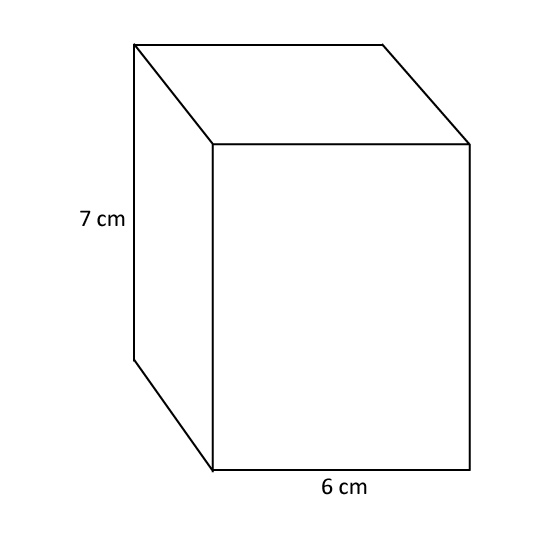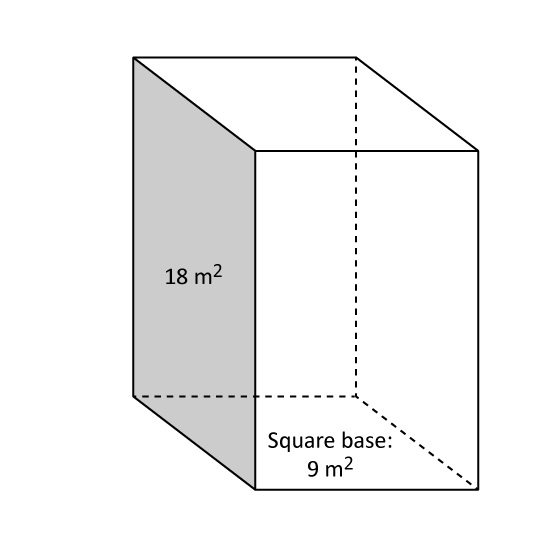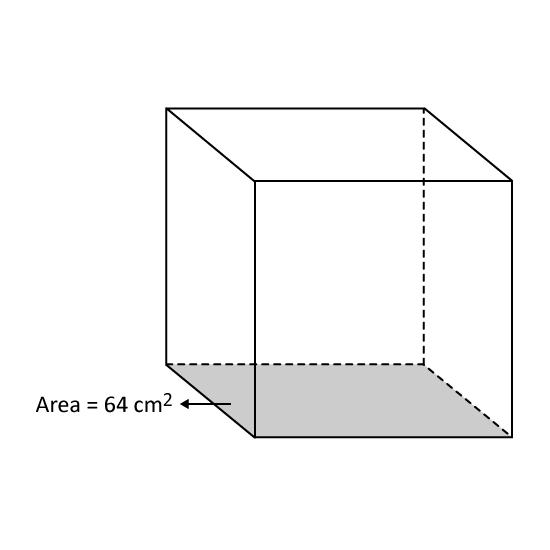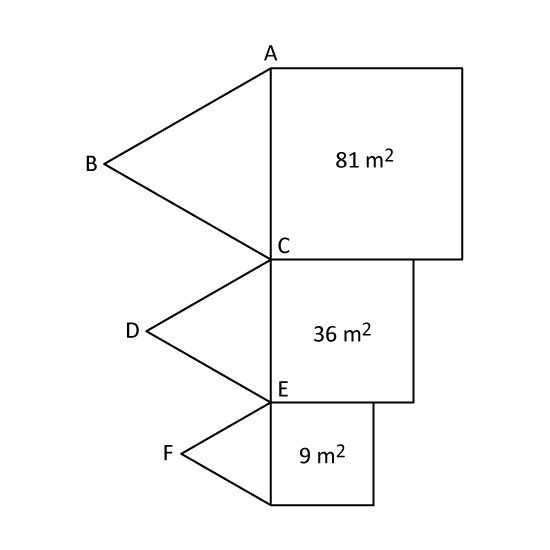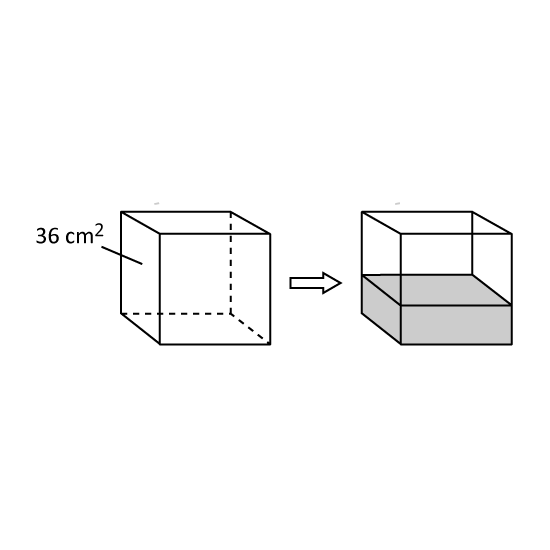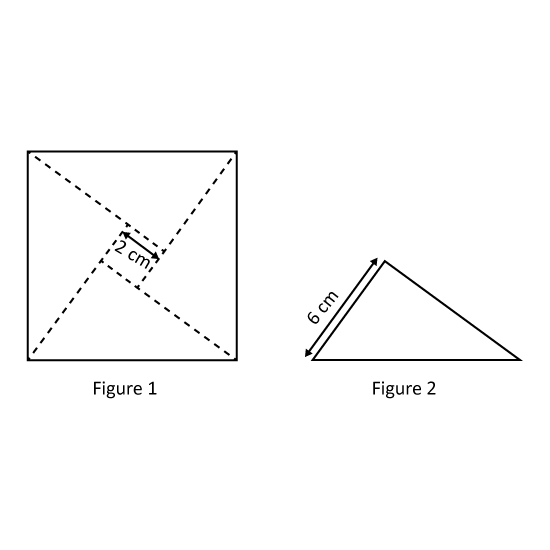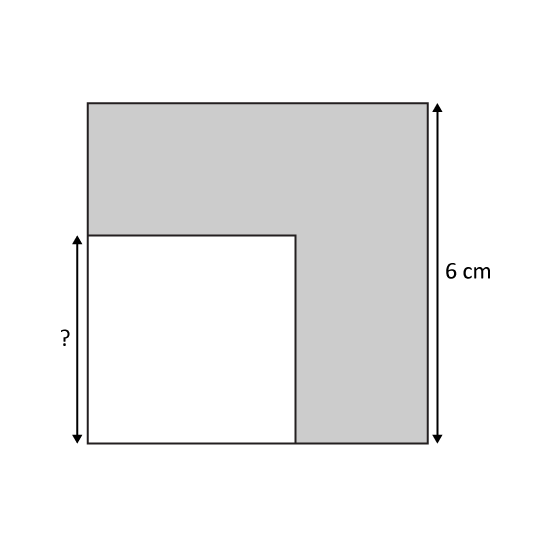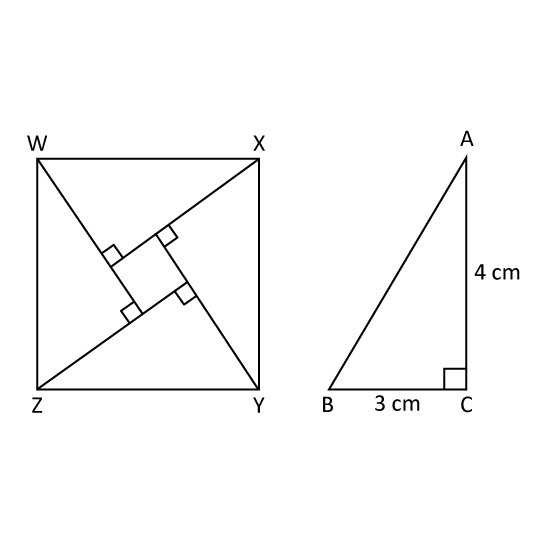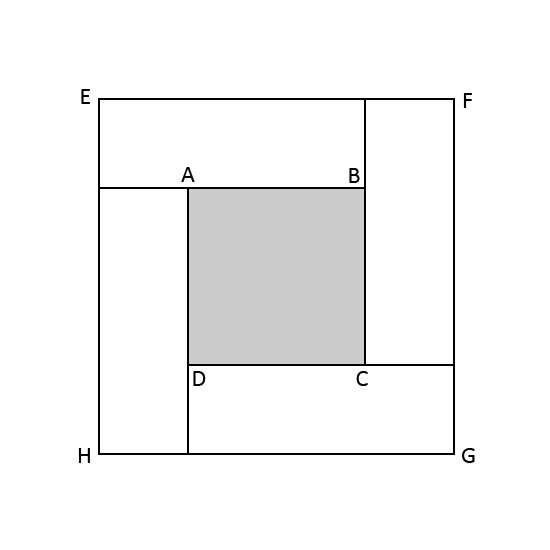Level 1 PSLE
A solid cuboid of height 7 cm has a square base of side 6 cm. What is its volume?
Level 1 PSLE
A solid cuboid of height 7 cm has a square base of side 6 cm. What is its volume?
Image in this question is not available.
Level 2
The volume of a cube is 125 cm3. Find the area of the shaded face.
Level 2
The volume of a cube is 125 cm3. Find the area of the shaded face.
Image in this question is not available.
Level 2 PSLE
The figure shows a cuboid with a square base of area 9 m2. The area of the shaded face is 18 m2. What is the height of the cuboid?
Level 2 PSLE
The figure shows a cuboid with a square base of area 9 m2. The area of the shaded face is 18 m2. What is the height of the cuboid?
Image in this question is not available.
Level 1
The area of a square is 81 cm2. Find the perimeter of the figure.
2 m
Image in this question is not available.
Level 2
The base of a cubical tank has an area of 144 cm2. The tank is 13 filled with water. Find the volume of water in the tank.
2 m
Image in this question is not available.
Level 2
The total area of the six faces of a cubical box is 96 cm2. What is the volume of the cubical box?
2 m
Image in this question is not available.
Level 1
The base area of the cubical box is 64 cm2. What is the volume of the box?
Level 1
The base area of the cubical box is 64 cm2. What is the volume of the box?
Image in this question is not available.
Level 3
The figure, not drawn to scale, is made up of 3 equilateral triangles and 3 squares. Find the ratio of the length AB to the length CD to the length EF. (Express your answer in its simplest form).
Level 3
The figure, not drawn to scale, is made up of 3 equilateral triangles and 3 squares. Find the ratio of the length AB to the length CD to the length EF. (Express your answer in its simplest form).
Image in this question is not available.
Level 2
The width and height of the cuboid are the same. Its length is twice of its width. Find the volume of the cuboid.
Level 2
The width and height of the cuboid are the same. Its length is twice of its width. Find the volume of the cuboid.
Image in this question is not available.
Level 3
The figure shows a rectangular container with a square base of area 16 cm
2. The area of the shaded face is 36 cm
2.
- What is the height of the container?
- James filled a third of the container with water. Find the volume of the water.
Level 3
The figure shows a rectangular container with a square base of area 16 cm
2. The area of the shaded face is 36 cm
2.
- What is the height of the container?
- James filled a third of the container with water. Find the volume of the water.
Image in this question is not available.
TRY FOR FREE
Level 3
Peter had a square piece of paper. He cut it along the dotted lines as shown in Figure 1 to get one small square of side 2 cm and four identical right-angled triangles. One such triangle is shown in Figure 2. Find the perimeter of the square piece of paper in Figure 1 before it was cut.
Level 3
Peter had a square piece of paper. He cut it along the dotted lines as shown in Figure 1 to get one small square of side 2 cm and four identical right-angled triangles. One such triangle is shown in Figure 2. Find the perimeter of the square piece of paper in Figure 1 before it was cut.
Image in this question is not available.
Level 3
The figure is made up of 2 overlapping squares. The area of the shaded part is 20 cm2. The length of the bigger square is 6 cm. Find the length of the smaller square.
Level 3
The figure is made up of 2 overlapping squares. The area of the shaded part is 20 cm2. The length of the bigger square is 6 cm. Find the length of the smaller square.
Image in this question is not available.
Level 3
ABC is a right-angled triangle. 4 such identical triangles are used to form the Square WXYZ. Find the length of each side of the big Square WXYZ.
Level 3
ABC is a right-angled triangle. 4 such identical triangles are used to form the Square WXYZ. Find the length of each side of the big Square WXYZ.
Image in this question is not available.
Level 3
In the figure not drawn to scale, 4 identical rectangles were placed around square ABCD to form a larger square, EFGH. The area of one rectangle is 12 cm2, and the area of ABCD is 14 of EFGH. Find the length of one rectangle.
Level 3
In the figure not drawn to scale, 4 identical rectangles were placed around square ABCD to form a larger square, EFGH. The area of one rectangle is 12 cm2, and the area of ABCD is 14 of EFGH. Find the length of one rectangle.
Image in this question is not available.
